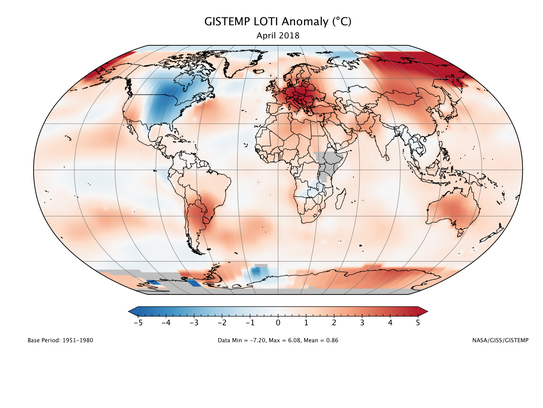

It was December 1984, and President Reagan had just been elected to his second term, Dynasty was the top show on TV and Madonna’s Like a Virgin topped the musical charts.
It was also the last time the Earth had a cooler-than-average month.
Last month marked the planet’s 400th consecutive month with above-average temperatures, federal scientists from the National Oceanic and Atmospheric Administration announced Thursday.
The cause for the streak? Unquestionably, it’s climate change, caused by humanity’s burning of fossil fuels.
“We live in and share a world that is unequivocally, appreciably and consequentially warmer than just a few decades ago, and our world continues to warm,” said NOAA climate scientist Deke Arndt. “Speeding by a ‘400’ sign only underscores that, but it does not prove anything new.”
Climate scientists use the 20th-century average as a benchmark for global temperature measurements. That’s because it’s fixed in time, allowing for consistent “goal posts” when reviewing climate data. It’s also a sufficiently long period to include several cycles of climate variability.
“The thing that really matters is that, by whatever metric, we’ve spent every month for several decades on the warm side of any reasonable baseline,” Arndt said.
NOAA’s analysis found last month was the 3rd-warmest April on record globally. The unusual heat was most noteworthy in Europe, which had its warmest April on record, and Australia, which had its second-warmest.
Portions of Asia also experienced some extreme heat: In southern Pakistan, the town of Nawabshah soared to a scalding 122.4 degrees on April 30, which may have been the warmest April temperature on record for the globe, according to Meteo France.
Argentina also had its warmest April since national records began there in 1961.
North America was the one part of the world that didn’t get in on the heat parade. Last month, the average U.S. temperature was 48.9 degrees, 2.2 degrees below average, “making it the 13th-coldest April on record and the coldest since 1997,” NOAA said.
For the year-to-date, the Earth is seeing its 5th-warmest start to the year.
A separate analysis of global temperature data from NASA also found last month was the third-warmest April on record.
Another milestone was reached in April, also related to the number “400”: Carbon dioxide — the gas scientists say is most responsible for global warming — reached its highest level in recorded history at 410 parts per million.
This amount is highest in at least the past 800,000 years, according to the Scripps Institute of Oceanography.
